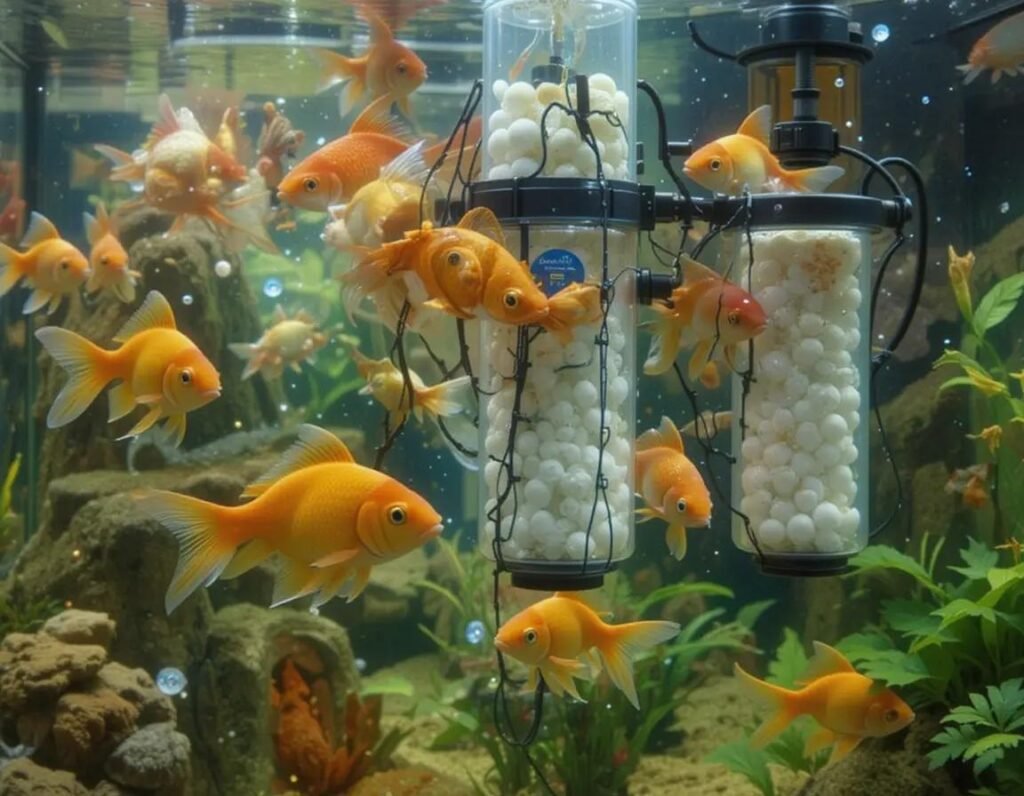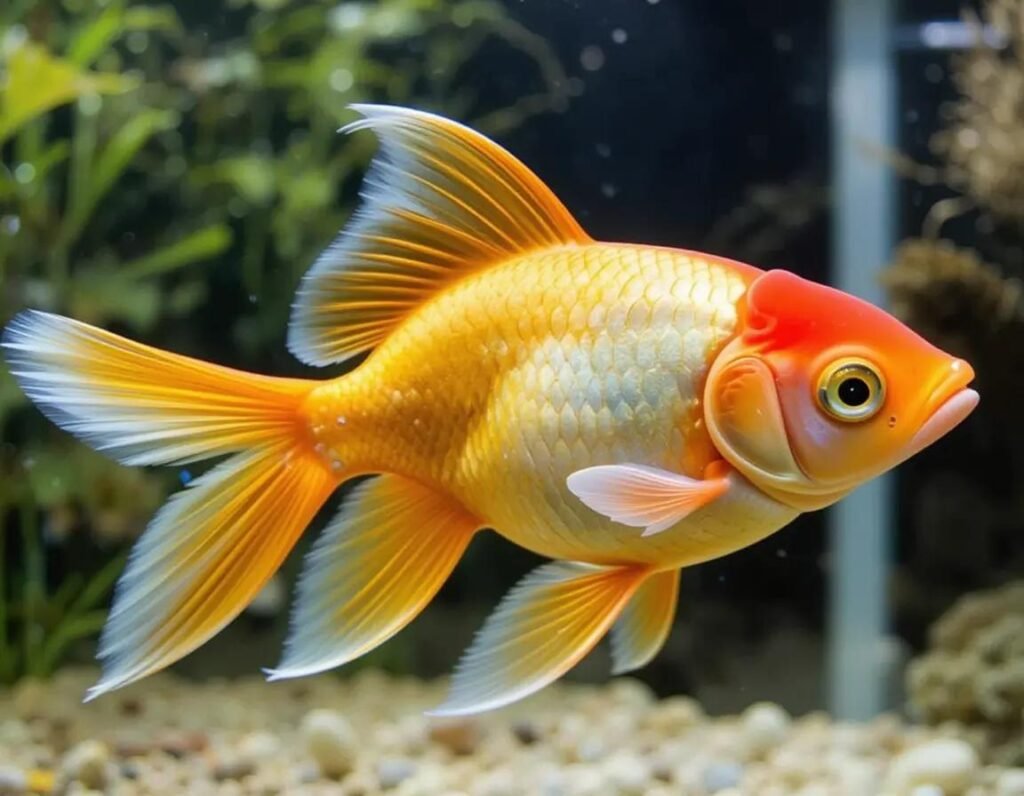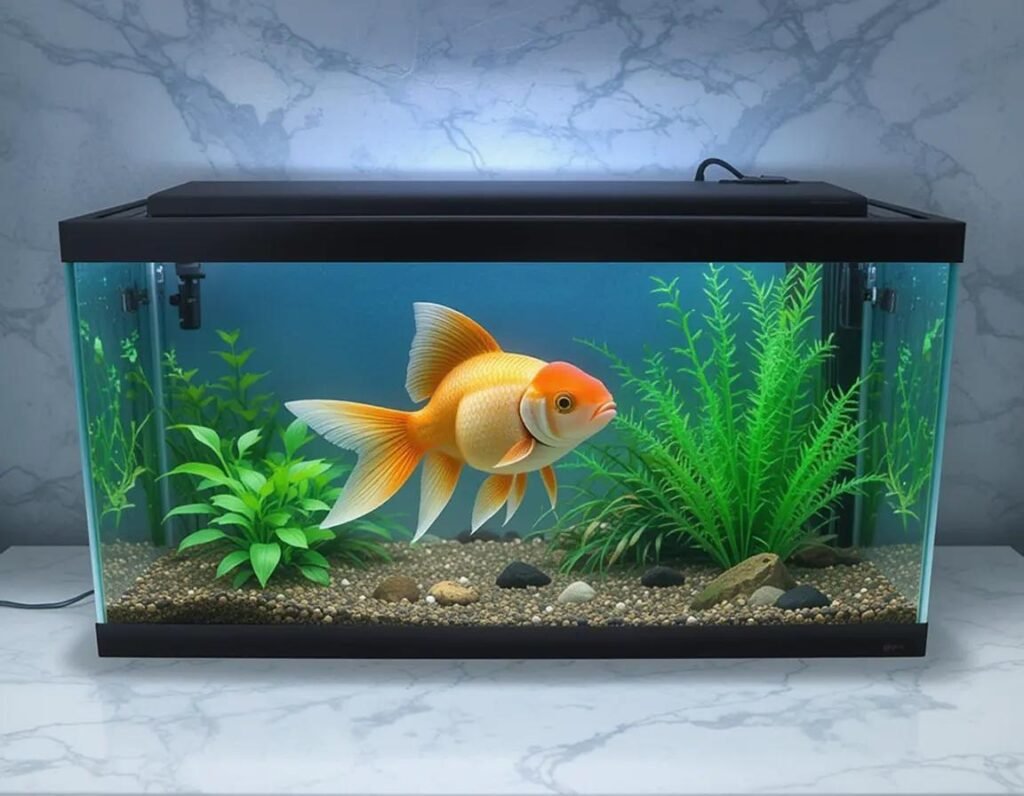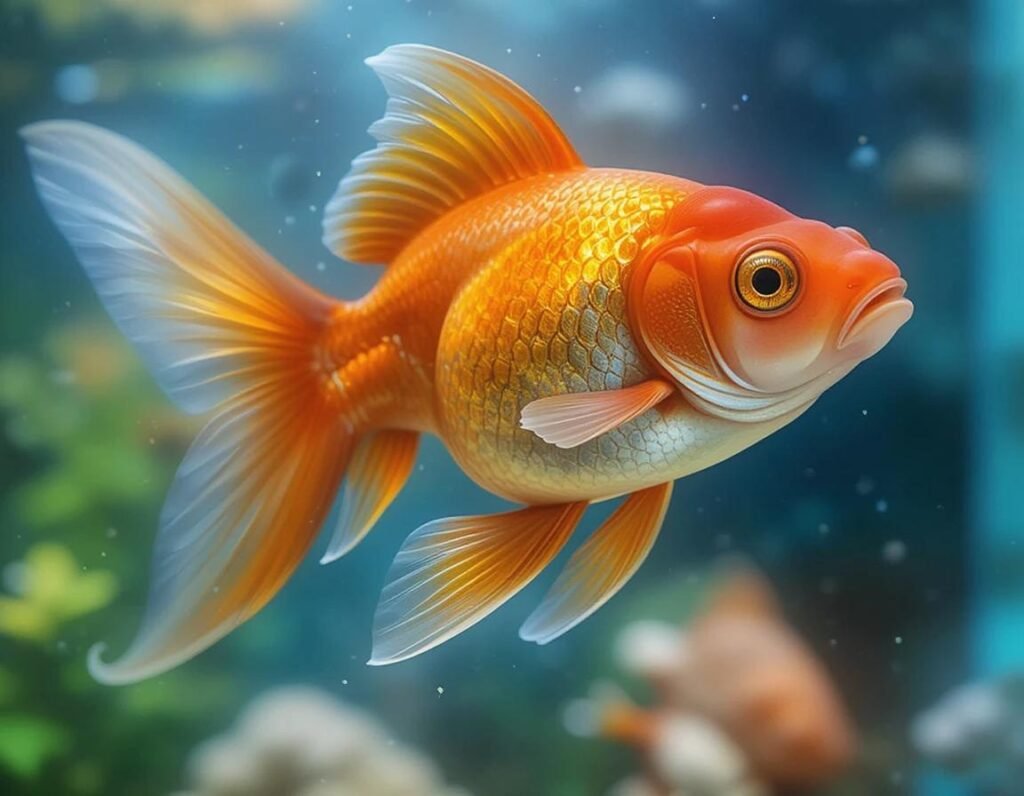
Goldfish Filter Types: Keeping Your Fish's Home Sparkling Clean
When it comes to setting up the perfect home for your goldfish, one of the most important pieces of equipment you’ll need is a filter. You know, the thing that makes sure your fish don’t live in a swamp. If you’ve ever wondered why the water in your tank looks a bit murky or smells… not-so-fresh, it’s probably time to think about your filter. But don’t worry! We’ve got you covered with this easy guide on goldfish filter types, and we’ll sprinkle in a bit of humor along the way. After all, cleaning up after your little aquatic buddies doesn’t have to be boring!
Why Do Goldfish Need a Filter?
Before we dive into the various filter options, let’s quickly chat about why your goldfish tank even needs a filter. Goldfish, much like your weird cousin who always eats too much at family gatherings, tend to make a mess. They eat, they swim around, they produce waste, and they’re just generally doing their thing — but all of that stuff adds up. Without proper filtration, the water can get dirty pretty quickly, leading to poor water quality and stressed-out fish. A good filter helps keep everything nice and clean so your goldfish can keep doing their best “swim and look cute” routine.
The 3 Main Types of Goldfish Filters
There are three main types of filters you’ll typically see for goldfish tanks: hang-on-back (HOB) filters, canister filters, and internal filters. Let’s break each one down so you can decide which one will work best for your goldfish’s pad.
1. Hang-On-Back (HOB) Filters
HOB filters are like the rockstars of the filtration world — they’re easy to use, efficient, and great for smaller to medium-sized tanks. These filters hang on the back of your tank (hence the name) and draw water through the filter media, where it’s cleaned before being pumped back into the tank.
Pros:
- Easy to set up: HOB filters are super user-friendly and don’t require any complicated installation.
- Space-saving: They don’t take up space inside the tank, which means your goldfish get more room to swim.
- Efficient filtration: They provide great mechanical and biological filtration, which is perfect for goldfish who produce a lot of waste.
Cons:
- Noise: Some HOB filters can get a bit loud, so if you’re looking for peace and quiet, this might not be the best option.
- Less suitable for large tanks: While great for smaller to medium tanks, they might struggle to keep up with the filtration needs of very large tanks.
2. Canister Filters
Canister filters are like the heavyweights of the filter world. These filters are perfect for larger tanks or if you have a lot of goldfish. Canister filters sit outside the tank and use hoses to pull water in, clean it through multiple filter stages, and then return it to the tank.
Pros:
- Highly efficient: Canister filters are known for their powerful filtration and ability to handle larger volumes of water, making them great for goldfish tanks.
- Multiple stages of filtration: These filters often have different media options for mechanical, biological, and chemical filtration, keeping your tank clean and your fish healthy.
- Quieter operation: Compared to HOB filters, canisters tend to be quieter and less noticeable.
Cons:
- Pricey: They tend to be more expensive than other filter types, so they might not be ideal if you’re on a tight budget.
- Complex setup: These filters can be a bit more involved to set up and maintain. You may need to spend some time learning how to use it properly.
3. Internal Filters
If you’re looking for something compact and budget-friendly, internal filters might be the right choice. These filters sit inside the tank and are submerged in the water, making them great for smaller tanks or tanks with limited space. They’re often used in tanks with smaller fish or fry (baby fish), but they can work for goldfish as well.
Pros:
- Space-saving: Since they’re inside the tank, they don’t take up any extra room outside the aquarium.
- Affordable: They’re usually much cheaper than canister filters.
- Low maintenance: These filters are easy to clean and maintain, making them a great option for beginners.
Cons:
- Less powerful: Internal filters are usually less efficient than HOB or canister filters, so they might not be the best option for tanks with a lot of goldfish or heavy waste.
- Take up space inside the tank: While they don’t clutter up your desk, they can take up valuable swimming space for your goldfish, especially if your tank is already on the smaller side.
Choosing the Right Filter for Your Goldfish Tank
Now that you know about the different filter types, how do you choose the best one for your goldfish tank? It all comes down to a few key factors:
- Tank size: If you have a smaller tank (less than 30 gallons), a HOB filter or internal filter should work fine. For larger tanks (over 50 gallons), a canister filter might be the better option.
- Number of goldfish: More fish = more waste. If you have a lot of goldfish, you’ll need a filter that can handle heavy waste production, so a canister filter might be your best bet.
- Budget: Canister filters are more expensive, so if you’re on a tight budget, an HOB or internal filter could be a more affordable solution.
- Aesthetic preferences: If you prefer a sleek and tidy look, HOB and canister filters are your best options. Internal filters take up space inside the tank, which might not be ideal if you want to maximize your goldfish’s swimming area.

Bonus Tips for Filter Success
- Don’t Overfilter, But Don’t Underfilter Either: You want the right balance. If the filter is too powerful, it could create strong currents that stress out your goldfish. If it’s too weak, your tank might start looking like a swamp. Aim for a filter that can cycle the entire volume of water in your tank about 3 to 5 times per hour.
- Maintenance is Key: No filter will work perfectly if you don’t maintain it. Clean your filter regularly (but not too often — you don’t want to remove the good bacteria) and replace the filter media as recommended.
- Position Matters: For HOB filters, make sure it’s hanging on the back securely, and for internal filters, position them near the tank’s surface to promote water movement and oxygenation.
Additional Tips for Maintaining a Healthy Goldfish Tank
Once you’ve chosen the right filter for your goldfish, the work doesn’t stop there! Here’s how to keep your filtration system running smoothly and make sure your goldfish tank remains pristine.
1. Monitor Water Flow
While goldfish aren’t known for being the most active swimmers (unless there’s food involved), some filters create too much water flow, which can stress them out. You want to keep the water moving enough to keep debris from settling, but not so much that your fish feel like they’re in a fast-moving river. If your filter’s current seems too strong, you can adjust the flow rate or place decorations strategically to block some of the current.
2. Watch Out for Clogs
Goldfish are notorious for eating a lot, and what they don’t finish often ends up in the filter. Over time, uneaten food, debris, and fish waste can clog the filter, reducing its efficiency. Make sure to clean the intake tube regularly to prevent a buildup of waste that could stop your filter from doing its job. A pre-filter sponge can help catch large particles before they enter the filter, keeping things flowing smoothly.
3. Test Your Water Regularly
Filters help clean the water, but it’s always a good idea to test your water parameters regularly. Ammonia, nitrite, and nitrate levels should be checked using water test kits. If your levels are off, it might be time to do a partial water change. A filter won’t remove everything, so water testing is essential for the health of your goldfish.
4. Replace Filter Media on Time
Filters rely on biological filtration (good bacteria) to break down waste. This process happens within the filter media, so it’s important to replace this media when it becomes worn or overly clogged. Don’t replace all the media at once, though! You’ll want to keep some of the old media to preserve those precious beneficial bacteria.
5. Be Patient and Consistent
Goldfish, like us, need time to settle into their environment, so be patient with your filter’s effectiveness. It takes time for bacteria to establish, and water quality improvements won’t happen overnight. Keep up with routine tank maintenance, and your goldfish will eventually thrive in their clean, well-filtered home.
Wrapping It Up: The Filter That Works for You and Your Goldfish
Choosing the best filter for your goldfish tank might seem like a complicated task, but once you break it down, it’s all about balancing tank size, number of fish, and maintenance preferences. Whether you’re opting for a canister filter for a big tank or a simple HOB filter for a smaller setup, the goal is the same: Keep your goldfish happy, healthy, and swimming in clean water. With the right filter in place and a bit of care, your tank will stay sparkling, and your fish will stay content.
And who knows? Maybe your goldfish will even start showing off their swim moves in their crystal-clear water. 🐠✨
Conclusion
Goldfish are wonderful, low-maintenance pets (once you get the right filter, of course), but like all pets, they need a clean home to thrive. Choosing the right filter is crucial to keeping your tank clean and your fish healthy. Whether you go with a Hang-On-Back (HOB) filter, canister filter, or internal filter, make sure it fits your tank size and the number of goldfish you have. And remember, even though the idea of cleaning filters isn’t the most glamorous part of fishkeeping, it’s totally worth it when you see your goldfish swimming happily in clear, clean water. 🐠💧

FAQs About Goldfish Filter Types
Here are some common questions that goldfish owners have when it comes to choosing and maintaining the best filter for their fish tank:
1. What is the best filter for a goldfish tank?
Answer: The best filter for your goldfish tank depends on the size of your tank and the number of goldfish you have. Canister filters are ideal for larger tanks because they offer powerful filtration and can handle heavy waste. For smaller tanks, Hang-On-Back (HOB) filters work well and are easy to maintain. If you’re on a budget or need something compact, an internal filter might do the trick for smaller setups.
2. How do I know if my filter is strong enough for my goldfish tank?
Answer: A good rule of thumb is that the filter should be able to cycle the entire volume of your tank at least 3 to 5 times per hour. So, if you have a 50-gallon tank, look for a filter rated for 150 to 250 gallons per hour. If your filter isn’t powerful enough, it may not do a great job keeping the water clean, especially with messy goldfish.
3. Can I use a filter that’s too powerful for my goldfish tank?
Answer: While a filter that’s too powerful can create strong currents that might stress out your goldfish, you can mitigate this by adjusting the flow rate or using decorations to block the current. You can also opt for a filter with a flow control feature to customize the water movement. Just be sure the filter isn’t creating a mini whirlpool that your fish have to fight against.
4. How often should I clean my goldfish filter?
Answer: You should clean your goldfish filter once a month, but don’t overdo it. While it’s important to keep the filter clean, removing all the gunk at once can disrupt the beneficial bacteria that help keep the water safe for your fish. Clean the filter media gently with tank water (not tap water) to preserve the bacteria, and replace the filter media as recommended by the manufacturer.
5. What’s the difference between biological, mechanical, and chemical filtration?
Answer:
- Mechanical filtration removes visible debris, like uneaten food and waste, from the water.
- Biological filtration uses beneficial bacteria to break down harmful substances like ammonia and nitrites, turning them into less toxic compounds.
- Chemical filtration uses materials like activated carbon to remove impurities like chlorine, heavy metals, and odors from the water.
A good filter for goldfish will usually include a combination of all three to keep the water clean and safe for your fish.
6. Should I have a backup filter for my goldfish tank?
Answer: It’s a good idea to have a backup filter or extra filter media on hand, especially if your current filter fails unexpectedly. Having a backup can help you avoid a sudden water quality problem that could stress out your goldfish. If your main filter stops working, you can quickly set up the backup filter and keep your goldfish comfortable while you troubleshoot the issue.
7. Can goldfish live without a filter?
Answer: Technically, goldfish can live without a filter, but it’s not ideal. Without a filter, the water will get dirty much faster due to their waste production, and you’ll need to do frequent water changes to keep it clean. A filter makes life a lot easier by maintaining water quality and reducing the frequency of water changes.
8. How do I choose the right size filter for my goldfish tank?
Answer: Choose a filter that is rated for a tank size slightly larger than yours. Goldfish produce a lot of waste, so it’s better to have a filter that’s slightly overpowered than one that’s underpowered. If your tank is 40 gallons, look for a filter rated for 50 gallons or more. The extra power will help keep the water cleaner and reduce the chances of harmful toxins building up.
9. Are there filters that can help with goldfish tank odor?
Answer: Yes! Some filters, especially canister filters with multiple stages of filtration, include a chemical filtration component (like activated carbon) that can help reduce odors by removing organic compounds and toxins. If you’re noticing unpleasant smells, consider upgrading to a filter that has chemical filtration or adding a separate odor-absorbing filter pad to your system.
10. Do I need to clean my filter if the water looks clear?
Answer: Even if the water looks clear, your filter is still working hard behind the scenes to remove impurities and toxins. It’s important to clean the filter regularly, even if the water looks clean. Clogs and buildup can sneak up on you, and cleaning the filter ensures that it’s doing its job efficiently and that the water quality stays high.


